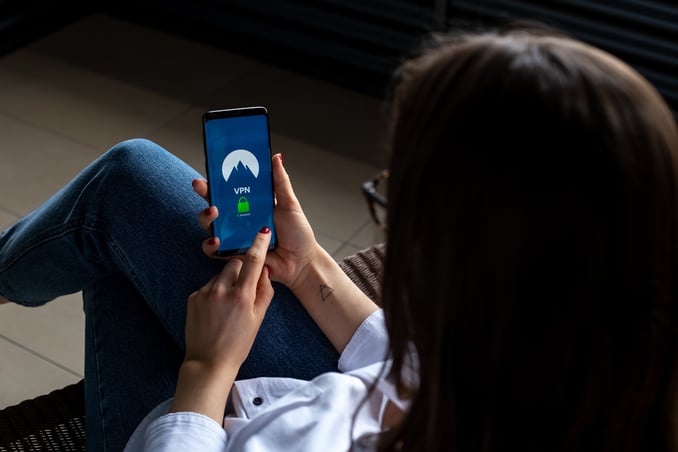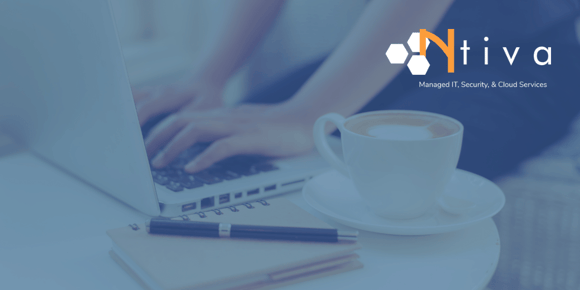As more and more companies begin to adopt a remote work culture, there are many things for organizations to consider. This article takes a look at the top three considerations every company should explore for a safe and healthy working environment!
First, we'll discuss how to keep company information secure from multiple different locations as employees are now working from home.
Second, how to keep employees connected with peers and leadership as seamlessly as possible despite distance.
And third, how to make sure employees are maintaining a healthy work/life balance, as many no longer have a sense of separation between personal and professional lives.
Let's dive in!
How to Keep Company Information Secure In a Remote Working World
As more employees are working from the comfort of their own homes rather than in the office, it's a must to make sure they have secure remote access to corporate applications and services through their individual home-based internet connections.
All businesses require a reliable remote access technology solution that employees can easily connect to.
If remote employees are unable to access the applications they need to complete their daily tasks, it can significantly slow down their productivity and the production of the company as a whole.
Which Remote Access Solution Is Best For Your Business?
Many businesses use public or private cloud computing services like Microsoft Azure, AWS, and Google Cloud, which allow remote employees to log-in through their organization’s main cloud computing platform with their assigned credentials.
However, although these cloud platforms are very secure, it is still possible for hackers to obtain access to sensitive company information by stealing employee passwords.
If your organization uses these services, it’s best to set-up a multi-factor authentication method—which requires remote employees to verify who they say they are, in order to be granted access to the application.

More complex remote access technologies include a VPN, VDI, or RDS. These applications provide a secure remote connection to a business network, personalized Windows-based system, or centralized server, which all offer their own unique benefits.
Each and every business will have its own requirements for a remote access solution, which is largely based on the work they perform, their employee size and range, and their consumers.
Organizations should also take into consideration the cost of office space that they once rented compared to the cost of remote access they now require - it's a worthwhile and necessary investment.
As the business world evolves, so do business needs!
How to Keep Remote Employees Connected With Each Other
As remote work has been steadily increasing over time, companies should consider new and creative ways to keep their employees connected to one another.
It can be easy for employees to lose the regular contact they once had with peers and leaders while working from home, which can cause miscommunication and poor production.
Now that there is more limited communication throughout the day, encourage employees to turn their cameras on in every meeting.
Video conferencing is now one of the main sources of communication at remote organizations and having face-to-face meetings can build loyalty and trust to promote focus and productivity.

If an organization relies too much on phone calls and messaging services, many non-verbal cues can be lost in translation and create distant employee relationships.
Similarly, try to make meetings more collaborative and engaging.
Encourage employees to be actively engaged in meetings using different meeting techniques. A good example is the “Six Thinking Hats” method, an easy way to get everyone involved by motivating employees to share unique thoughts and think outside of the box.
Lastly, encourage employees to keep in touch through other social opportunities such as the Slack chat platform, virtual team lunches, or virtual company happy hours.
Finding ways to make up for the lack of in-person communication is key to keeping a lively and connected workforce.
How to Help Employees Maintain a Healthy Work/Life Balance
Remote employees are likely on their computers for the majority of the day, accessing the corporate applications and services they need to complete their tasks and keeping in touch with co-workers and clients.
Studies have shown that remote work really does mean longer days.
Although employees now have a few new perks while working from home, such as more flexibility during the day, no morning commute, and less formal attire, there are certainly drawbacks as well.
They are working longer days, attending more meetings, and are being flooded with more emails. According to the National Bureau of Economic Research, the average workday has lengthened by 48.5 minutes and the number of meetings increased by 13 percent to accommodate recent economic changes.
Additionally, as the economy remains uncertain and layoffs have increased, employee anxiety has driven many to overwork themselves even further to prove their worth, which is ultimately leading to overwhelming amounts of stress and burnout.
These increased work hours create more time for employees to engage with their computers, tablets, or smartphones. This is largely what causes employees to feel the effects of burnout and fatigue, as the electronics they constantly interact with transmit digital blue light.
Blue light has been linked to problems like digital eye strain or computer vision syndrome in about 50% of computer users. These conditions can cause blurry vision, dry eyes, headaches, trouble concentrating, and sleep issues.
Generally, treatment for eye strain consists of making changes in your daily habits or environment, like taking breaks from electronics throughout the day to let the eyes refocus.
For some, it can make a big difference to start wearing blue light glasses, which are made specifically to protect the eyes during activities such as computer use and interaction with blue light while working.
The blue light protective lenses can be added to regular prescription lenses or worn in frames on their own. They act as a shield for blue light by letting in the more natural light needed to view digital screens while simultaneously filtering out the harmful blue light.

Lastly, organizations should encourage employees to take regular breaks throughout the day.
Remote work is new to many employees and they tend to feel like they can’t leave their computer during the workday or take time off because they are already working from home.
Organizations should provide clarity about their time-off policy and redefine “vacation time” to mean more than just recreation and travel. Demonstrate care of your employees by offering flexibility throughout the workweek and suggesting that they take shorter breaks more often, rather than weeklong vacations.
There are many steps to converting your business into a high-functioning remote workforce!
It begins with protecting your company with remote access technology and ends with protecting employees’ well-being. Finding a balance between the organization itself and those who help run it will make for higher productivity and better production in 2021.
Learn more about secure remote working by downloading our new guide to remote work security "Home: The New Cybersecurity Battleground" below!




